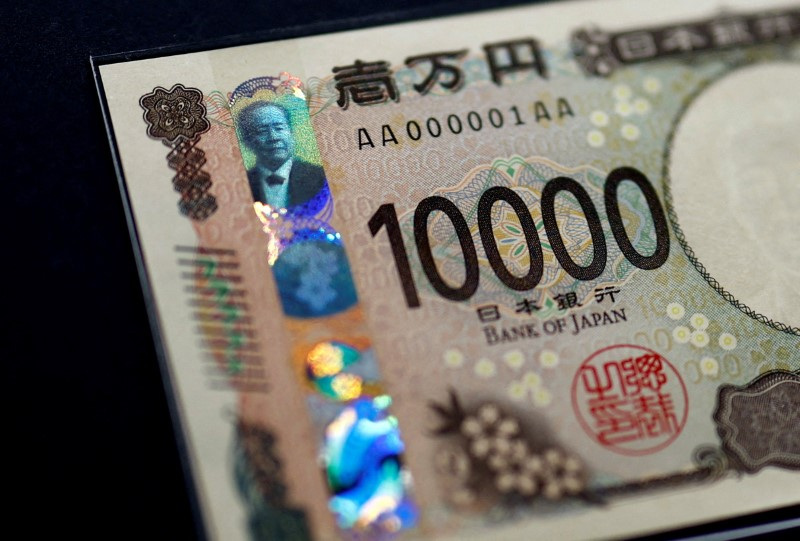Table of Contents
The yen has been on a rollercoaster ride, teetering on the edge of chaos as the global financial landscape tosses it about like a leaf in a storm. The drama began with the yawning chasm between U.S. and Japanese interest rates, a gap so wide it made the yen look like a tiny dot on the horizon. Since the dawn of 2022, the yen has plunged over 20% against the dollar, forcing Tokyo to step into the ring, gloves on, for a series of interventions. September and October 2022 were just the opening acts, with more rounds in April and May 2024, but the yen kept sliding, scraping bottom at a 38-year low of 161.96 to the dollar on July 3rd. Mid-July whispers suggested Japan was back at it, trying to anchor the freefalling currency.
But then, out of nowhere, a plot twist! The Bank of Japan (BOJ) decides on July 31st to jack up interest rates, sending shockwaves through global stock and bond markets. Suddenly, the yen is back on the upswing, buoyed by investor jitters over U.S. economic prospects and an expected easing of American monetary policy. The once ubiquitous carry trade—where investors borrowed yen at rock-bottom rates to chase higher yields elsewhere—began to unravel. The yen surged against the dollar, but let’s not get too excited; it’s still a shadow of its former self.
Why does this wild currency ride even matter? The yen has long been the go-to for cheap global funding. But in recent years, as other central banks ratcheted up borrowing costs, the yen remained a bargain. This made Japan’s currency a linchpin in global finance, its every twitch rippling across markets.
BOJ’s Intervention—A Political Tightrope Walk
Japan’s approach to yen intervention has taken a dramatic turn. For years, Tokyo’s mission was to prevent the yen from getting too strong, fearing the wrath it would unleash on Japan’s export-driven economy. But 2022 flipped the script. As the yen nosedived, Tokyo jumped in, buying up yen like there was no tomorrow to keep it from sinking further. The stakes couldn’t be higher: Japan’s manufacturing juggernauts, long reliant on a weak yen, have been shifting production overseas, eroding the currency’s benefits while making life hellish for households and retailers as import costs soar.
This year alone, Tokyo waded into the currency markets on April 29th and May 1st, according to the Ministry of Finance. But despite these efforts, the yen’s decline has been relentless, with more suspected interventions peppered throughout July. Yet, in true Tokyo fashion, official confirmation of these moves remains as elusive as ever. The government maintains its cryptic stance, only vowing to act when volatility gets too wild.
Why the Yen Weakened—A Perfect Storm
What’s behind the yen’s nosedive? It’s a cocktail of factors. First, the U.S. Federal Reserve has been on an interest rate hike spree, while the BOJ drags its feet on tightening, leaving the interest rate gap yawning wider. The yen, looking increasingly unattractive next to the mighty dollar, has been left to flounder. Then there’s Japan’s growing dependence on imported fuel and raw materials, forcing companies to convert yen into foreign currencies in massive amounts. Add to that the fact that Japanese manufacturers have been plowing their overseas profits back into foreign investments rather than repatriating them, and you’ve got a recipe for a weak yen.
Why Isn’t the BOJ Raising Rates Faster?
The BOJ, under Governor Kazuo Ueda, finally pulled the trigger on ending negative interest rates in March, nudging the short-term policy rate up to 0.25% in July. But Ueda is playing a cautious game, signaling that further hikes hinge on Japan hitting that elusive 2% inflation target. Analysts predict a gradual climb, with rates potentially reaching 1% to 1.5% in the next few years, but don’t hold your breath for a swift return to normalcy. Japan’s policymakers are treading carefully, wary of strangling already feeble consumption or spooking the markets into a long-term interest rate surge that could blow up the cost of servicing Japan’s colossal public debt.
The Double-Edged Sword of a Weak Yen
A weak yen is a double-edged sword, slicing through Japan’s economy in unexpected ways. On the one hand, it’s a nightmare for households and retailers, driving up the costs of everything from fuel to food. Inflation, particularly core inflation—which excludes fresh food but includes fuel—has been stubbornly above the BOJ’s target for over two years, squeezing consumers with higher living costs.
Yet, it’s not all doom and gloom. The weaker yen has been a boon for Japan’s exporters, fattening their yen-based profits from overseas ventures. These windfalls might just trickle down into wage increases, bolstering consumer spending. And let’s not forget the tourism bonanza! A cheaper yen has made Japan a hot destination, with overseas visitors flooding in, giving a much-needed boost to sectors hammered by the pandemic.
As of now, $1 equals 146.31 yen, but in this unpredictable financial landscape, who knows where the yen will go next? The ride’s far from over.

